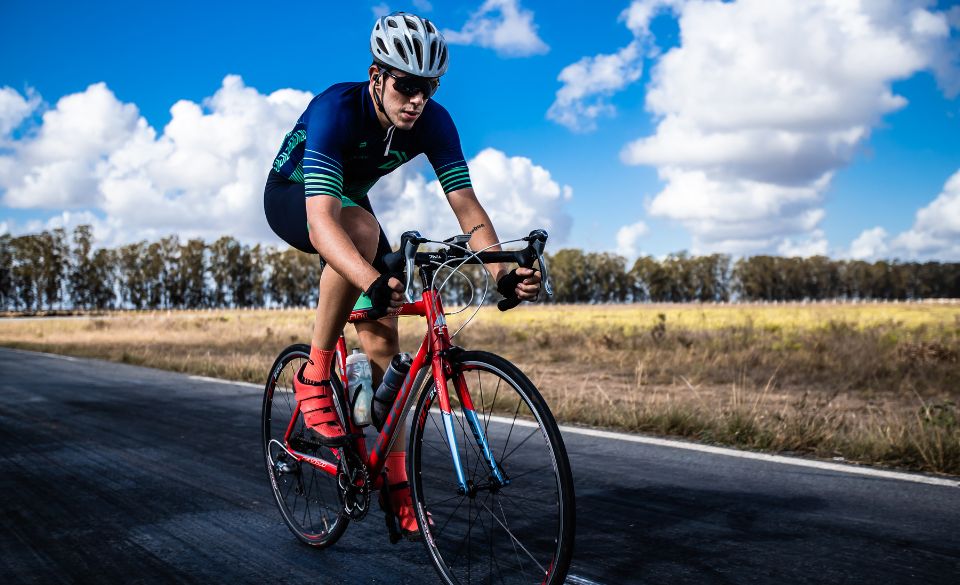
How Do Cyclists Reduce Drag
What is Aerodynamic Drag
Aerodynamic drag is a force that acts on an object when it moves through a fluid, such as air or water. This force resists the objects motion, making it harder to move. Aerodynamic drag occurs when the fluid exerts a force in a direction opposite the object’s motion.
When an object, such as a car, is moving through the air, the air must move around the object, separating and then recombining on the other side. This can create turbulence and areas of low-pressure behind the object, known as wake. This wake changes the pressure on the front of the object, creating an aerodynamic drag force. This force opposes the object’s motion and increases as the speed of the object increases.
The aerodynamic drag experienced by an object is determined by several factors. These include the shape of the object and the density of the fluid. Objects with a more aerodynamic shape, such as a teardrop shape, require less aerodynamic force to move through the air. Objects with a less aerodynamic shape, such as a cube, experience more drag. The density of the air also affects the aerodynamic drag. A denser air will require more aerodynamic force to move an object through it.
In addition to air density, temperature plays a role in the magnitude of aerodynamic drag. As the temperature of the air increases, the viscosity decreases, making it easier for the object to move through the air. As the temperature decreases, the viscosity increases, making it harder for the object to move.
Aerodynamic drag is an important factor to consider when designing vehicles, from cars to airplanes and bicycles. Aerodynamic drag can increase the amount of power needed to maintain the Cyclists speed. Therefore, reducing the aerodynamic drag of a Cyclist can lead to improved economy and performance. Bikes can be designed to reduce aerodynamic drag by creating a more aerodynamic shape, such as a teardrop shape, or by adding features and air-flow directing designs.
How Do Cyclists Reduce Drag
Cycling is becoming an increasingly popular sport among all skill levels, and as enthusiasts get increasingly serious about improving performance, they must pay attention to how they can reduce drag. Drag is the force that is generated when an object moves through a fluid, and as it relates to cycling, it is the force placed on the cyclist that creates resistance while they are riding.
For cyclists, there are several ways to minimize drag so they can maximize their performance, such as body and bike positioning, clothing, aerodynamic accessories, and even mental strategies.
Body Positioning and Bike Fit
The position of the cyclist has a huge impact on drag reduction and can be adjusted to adjust the bike correctly and for the cyclist’s comfort. Start by getting a professional bike fitting to ensure the bike is correctly sized for the rider and that the rider has the most efficient positioning possible. Once the fit is perfect, adjust the saddle and handlebars on your own as needed throughout your ride.
The cyclist should aim to get into an aerodynamic tuck on the bike. This means bringing the torso low towards the handlebars and keeping the chin and elbows down. While this position might be surprising for cyclists used to riding upright, great power and speed can be gained from maintaining an aerodynamic body position, as it reduces wind resistance.
Clothing
Biking attire is one of the areas most visible to the casual onlooker when it comes to performance, with many cyclists donning sleek, aerodynamic jerseys and tight shorts. However, while clothing can help reduce drag, specialized aerodynamic bike clothing can also be very expensive.
Something as simple as tucking the ends of the shirt into the shorts or the jersey into the bibs can help reduce excess fabric flapping in the wind and create a more streamlined look. Also consider wearing form-fitting clothing or adding mesh panels to clothing to control airflow around the body and reduce drag.
Accessories
Many cyclists are taking their drag reduction efforts to the next level by investing in aerodynamic accessories, such as handlebar extensions and disc wheels. These provide added aerodynamic advantages when used correctly and can be valuable for serious cyclists looking to trim precious seconds off of their times.
Mental Strategies
Just as important for cyclist performance as any physical element are the mental strategies and focus that cyclists can employ to minimize drag. Mental relaxation and control of breathing is essential for peak performance. Not only do relaxed muscles lead to a more efficient body position, but controlling your breathing can also keep your body cooler and reduce overexertion.
In addition, focusing on the shortest and fastest lines during a race and into corners as well as being aware of the strong side winds can all help reduce drag by minimizing sudden and unnecessary movements.
By following some of these simple tips, cyclists can make a big difference in their performance by reducing drag, leading to improvements in time, speed and power. As with any sport, practice and knowledge are key, and cyclists should take the time to learn what works best for them to maximize their performance.
Reducing Drag Though Bicycle Design
In sports racing, every thousandth of a second counts. To maximize their performance, cyclists need maximum speed — and part of attaining top speeds is reducing drag. Drag is the amount of force opposing an object’s direction when it moves through a liquid or a gaseous environment, such as air. For cyclists, this means that a greater reduction of drag means a greater increase in their speed.
The design of a bicycle — particularly the silhouette of the frame, wheels, handlebar, and aero helmet — is a significant factor determining the amount of drag it will experience during a race. This is why manufacturers continuously seek to develop more aerodynamic bicycles and components, as every bit of drag reduction yields a noticeable outcome in terms of speed.
Bicycle frame design is a main focus for drag reduction. Generally speaking, round and box-shaped tubing outperform aerofoils and other shapes when it comes to reducing drag. This is because more aerodynamic frames along the lines of aerofoils can sometimes act like a sail and increase drag, rather than reduce it. Therefore, when designed and fitted to a rider with the correct angles and fit, less aerodynamic tubing shapes, such as standard round or ovalized tubes are preferred, as this provides a more consistent, smooth flow for airstreams over the frame.
Fitting an aero helmet also helps cyclists to reduce drag. An aero helmet is designed to slip quietly through the air, minimizing turbulence and drag. It’s important to find a helmet that fits correctly, as an ill-fitting helmet can actually increase drag.
Another crucial drag-reducing element of the bicycle is the wheel. The spin of a wheel generates turbulence as air passes across it, resulting in drag. Wheel manufacturers are constantly working to develop wheels that require less drag and produce more speed. Some manufacturers have replaced traditional spoke wheels with bladed spokes, while other companies are introducing disc wheels to reduce drag even further.
Ultimately, the combination of the frame, wheels, handlebar, and aero helmet all play a major role on reducing drag. Every cyclist needs to find the correct balance between aerodynamics and strength, as well as comfort. With the latest technology available, cyclists can sure enjoy a larger benefit of drag reduction and improved performance.


